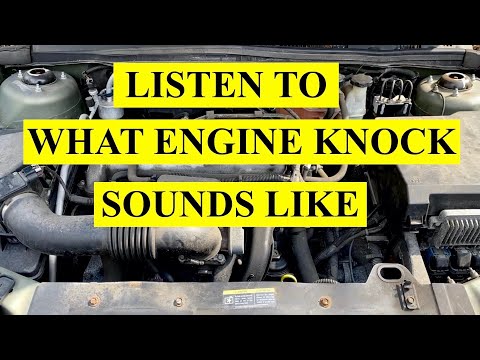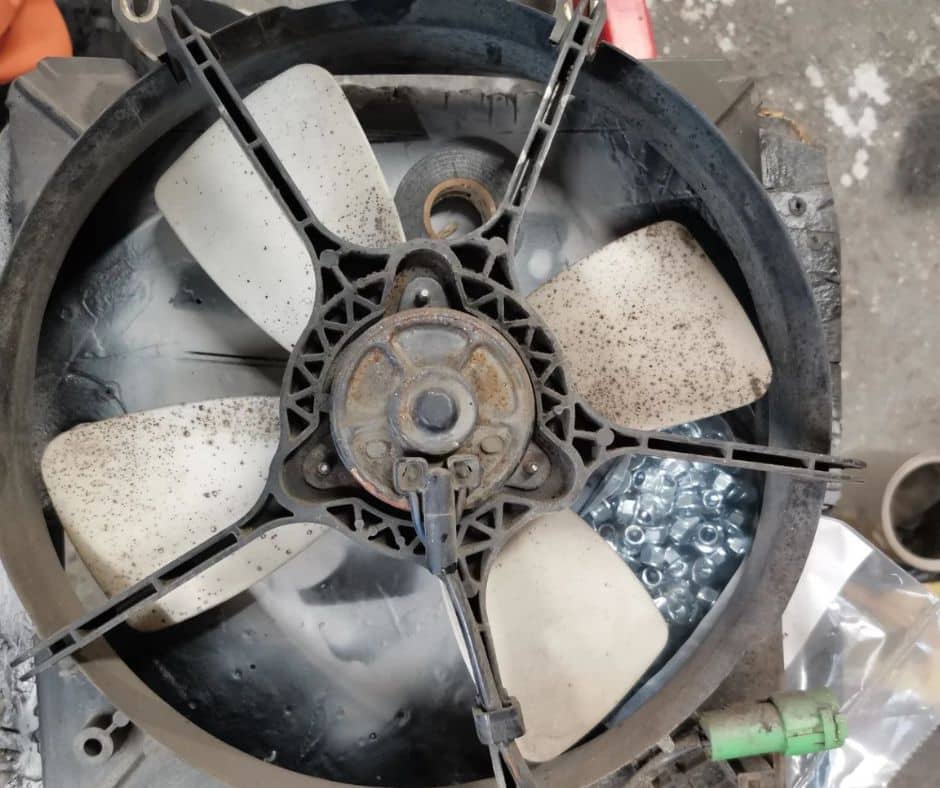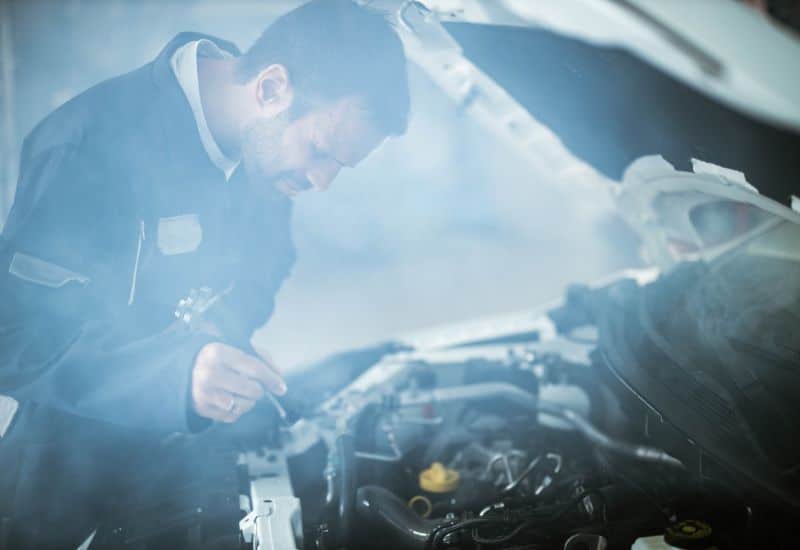
An overheated car can be an expensive nightmare. Even if you get the engine block cooled down without a piston seizing, there’s still a good chance all that heat did something to the engine or the cooling system.
Remember that, in most instances, your car’s engine can withstand overheating for a short period—typically between 30 seconds to a couple of minutes—without causing significant harm. However, extended overheating may lead to severe consequences. That’s why it’s crucial to act swiftly when your vehicle starts to overheat.
You’re essentially staring at two problems. You have to figure out what happened to the engine or the cooling system that caused it to overheat and what damage might have been caused by all the severe heat.
It usually helps to start by identifying what caused the overheating incident in the first place. Along the way, you’re likely to find other symptoms that you can use to spot obvious signs of engine damage caused by overheating.
What Is the Normal Operating Temperature of an Engine?
A normally operating engine will warm up to around 195 to 220 degrees and hang in that range. The high end of this range is above the 212-degree point where water boils, which is why many systems like the engine coolant and radiator are sealed.
When the engine runs hot at temperatures over 220 degrees or overheats to 275 degrees or more, it can start to break down the oil. Once this happens, the oil precipitously loses the ability to lubricate the relationship between the pistons and the cylinder walls. The increased friction from bad oil adds even more heat to the equation!
6 Telltale Signs Your Engine Has Suffered Damage from Overheating
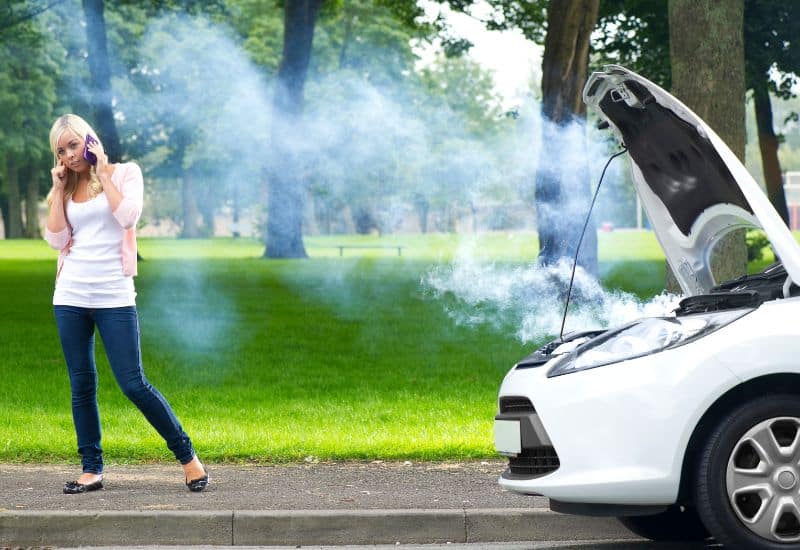
Anytime a car overheats, there’s a very serious chance that something in the engine or cooling system is damaged. Sometimes it’s blatantly obvious, like a seized piston that turns the engine block into a high-priced boat anchor. However, some are more subtle, like the engine overheating again easily without any apparent cause.
If you notice one or two of the following symptoms, there’s a good chance that your engine was damaged by overheating.
1. The Car Overheats Again Easily
A lot of cars that suffer one overheating incident become prone to overheating again. This is often due to damage caused by excess heat affecting critical components like the engine block, the cylinder head, or the cooling system.
High heat can cause the engine oil to break down, increasing friction. Overheating can also crack the cylinder head, blow the head gasket or compromise the ability of the cooling system to draw heat energy out of the engine block.
2. Oil Looks Foamy
Oil on the dipstick that looks foamy or a little bit like chocolate milk is often a sign that coolant has infiltrated the system somehow. This could be the cause or the result of the overheating incident. However, the big concern here is that the car has a cracked cylinder head or a blown head gasket which is allowing oil and coolant to mix.
3. Signs of a Cracked Cylinder Head or Blown Head Gasket
If overheating causes a blown head gasket or cracked cylinder head, it will hamper the cooling system and foul the oil. Most of the time, you’ll see it in the oil pan and dipstick and oil in the coolant.
Oil and coolant can seep through the head gasket or cylinder head to the combustion chamber. This will cause the engine to run rough and hot. Eventually, oil and coolant will make their way into the exhaust manifold, which will come out as a white or grayish-blue exhaust.
4. The Oil Looks Very Dark
Motor oil starts to break down when it gets over 275 degrees. This affects its ability to properly lubricate the relationship between the pistons and the cylinder walls. The increased friction adds to the heat of the engine block, making it harder for the engine cooling system to draw enough heat out, making the car more prone to overheating again.
5. The Coolant Is Dark
Dark coolant is another common sign of engine damage from overheating. This could be from debris that broke loose from deep within the radiator core or oil that entered the system from a blown head gasket.
An engine that’s been damaged by a past overheating event is also more likely to suffer from degraded coolant. This can make your coolant look darker than usual in the reservoir. It also limits the coolant’s ability to transport heat energy out of the engine block to the radiator, where it dissipates into the outside atmosphere.
6. Coolant Leaks Under the Car
Noticeable coolant leaks and drops of antifreeze under the car are other telltale signs of an engine that’s been damaged by an overheating problem. This could be something simple like a leak in a radiator hose, a bad radiator cap, or a bad thermostat.
Though the big worry here is that the overheating caused a severe problem like a crack in the engine block or one of the cylinders, if the engine block itself cracked during a previous overheating event, the coolant passages passing through the engine are damaged. Sometimes this can let coolant into the cylinders, though it can just as easily allow coolant to leak out.
3 Symptoms of a Cracked Engine Block Caused by Overheating
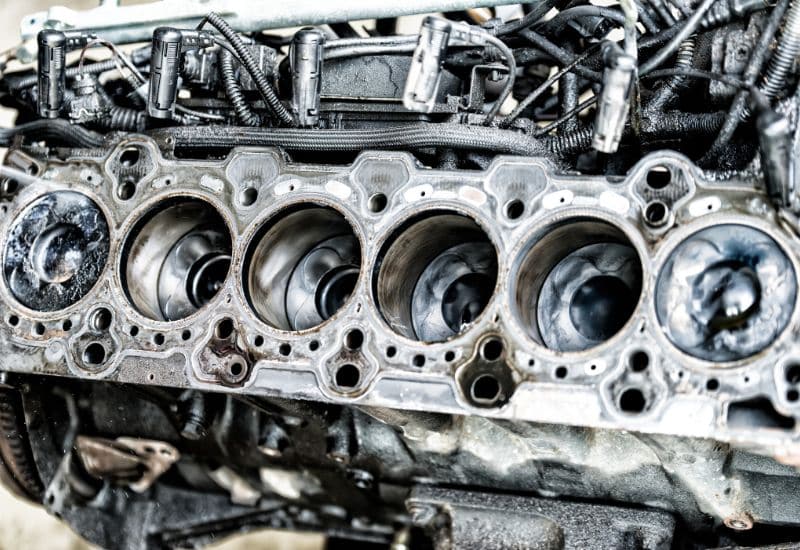
A coolant leak from a cracked block might seem minor when the car is parked, and the engine is cold. The system might not leak at all for the first few minutes after you start the engine. Once the thermostat opens and pressurized coolant starts moving through the system, the coolant leak caused by the crack in the engine block becomes noticeably more severe.
If the coolant leak leaves coolant on something hot, like the engine block or the exhaust manifold, you’ll often see a shocking amount of white, sweet-smelling steam. If the coolant is pouring straight out and onto the road, you might not notice anything until the temperature gauge on the dash starts to spike.
I. Knocking and Pinging Sounds Coming from the Engine
Knocking and pinging sounds are often signs that the engine block is so close to overheating that the heat and pressure in the cylinders are causing pre-ignition of the fuel/air mixture. Not only does this mess up the engine’s timing, but it can cause serious damage to the piston, valves, and cylinder walls.
You will often get these strange knocking and pinging sounds from a blown head gasket that occurred during a previous overheating problem. It can also be due to degraded or contaminated oil that’s failing to lubricate the cylinders properly.
II. Strange Odors in the Engine Bay
The severe heat of an overheated engine can affect rubber components, damage the protective coating on wires and singe the surface of critical engine components causing foul odors. They get trapped under the hood long after the problem.
A fishy or urine-like odor usually indicates wiring or other plastic components damaged by the overheating incident.
Like rotten eggs, a sulfur odor indicates that coolant, oil, or other contaminants have entered the cylinders and migrated down into the catalytic converter through the exhaust manifold. This is often a secondary symptom of a warped cylinder, cracked engine block, blown head gasket, or a cracked cylinder head.
III. Poor Engine Performance
There are a lot of engine components that can be damaged by overheating, which will affect the overall engine performance. Some of the more serious ones like damaged rings, a warped cylinder, a cracked cylinder head, and bad valves, can be so expensive to fix that you might have to debate writing the car off altogether.
Though minor things like fouled spark plugs and degraded engine oil can be relatively inexpensive to fix after an overheating incident. Spark plugs, in particular, can blister after overheating if this is the case, you’ll likely have to replace all the spark plugs and/or have a tune-up performed to restore typical engine performance.
6 Warning Signs of an Overheating Engine You Shouldn’t Ignore
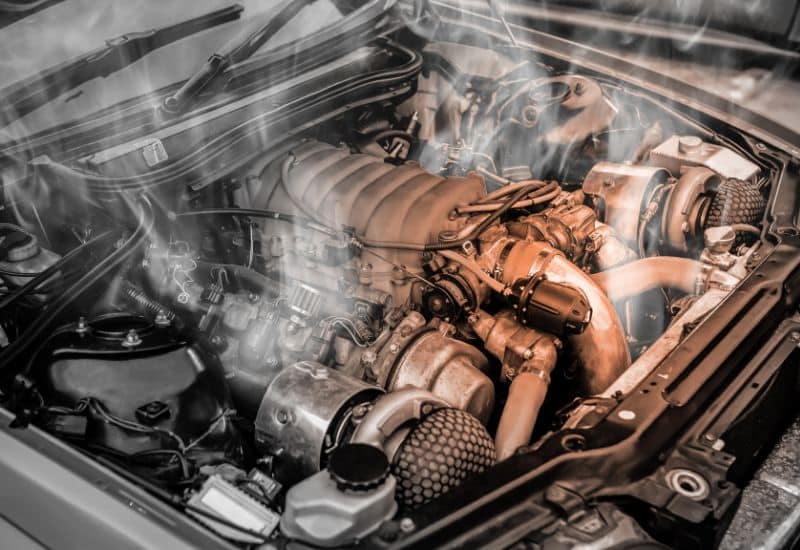
Sometimes the signs of an overheating engine can be subtle, and the temperature gradually climbs up. If you take your eyes off the dash temperature gauge for too long, it can hit the red line, where some severe problems start.
It can be hard to tell if your car is about to overheat or if it’s just running a little hot, especially if it’s one of those hot summer days where you’re already sweating through your seat. If you notice one or more of the following warning signs, your engine might be about to overheat.
1. Temperature Gauge Is Near the Red Line
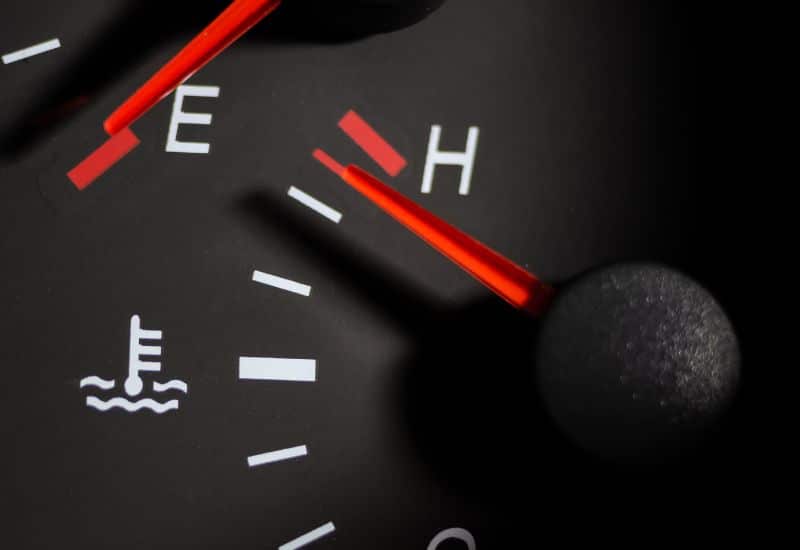
Normally, the temperature gauge on your dash console should sit around the half to two-thirds mark. If it’s any higher than that or kissing the red line, it means the coolant circulating around the engine block is dangerously hot. The engine block is too hot and likely about to overheat and/or seize a piston.
2. The Temperature Gauge Gradually Increases
Sometimes a minor coolant leak or friction from bad oil can cause the heat inside the engine block to slowly rise. You might not even notice it if you’re staring at the gauge. Though there’s a point where a creeping temperature gauge starts to rocket up, you’re at real risk of overheating damage to the engine or the cooling system.
3. A Metallic Ticking or Knocking Sound
Metallic ticking and knocking sounds usually indicate that the engine’s heat is degrading the oil’s ability to lubricate the pistons. If the knock gets louder, the gasoline in the cylinders might be pre-igniting out of time with the engine’s cycle.
4. A Burning Smell Coming from the Vents or Engine Bay
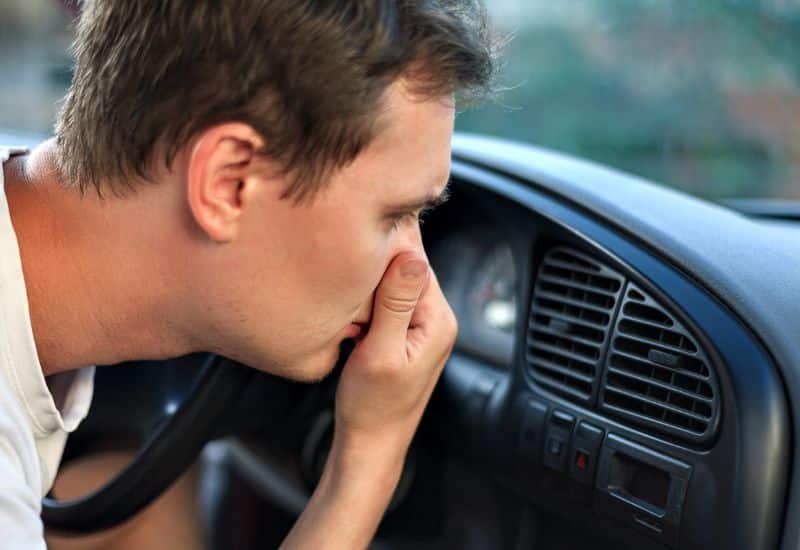
If your car’s climate controls are set to fresh air, then you can easily pick up the odors of overheating emanating from the engine bay. This might smell like melted plastic from hoses and wires starting to melt or sweet-smelling steam from a coolant system leak.
5. Steam Under the Hood
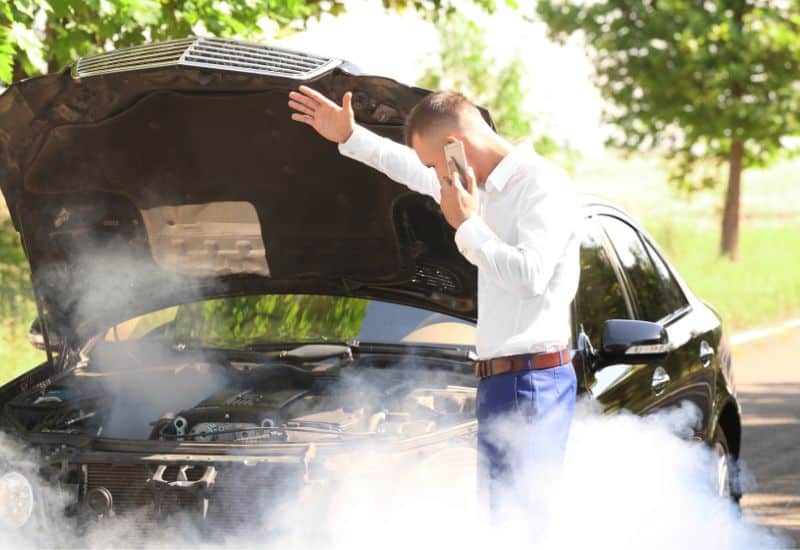
As the engine gets hotter and hotter, leaks in coolant lines or the radiator boiling over can release steam plumes under the hood. This might only look like wisps of white smoke from the seams of the hood when you’re driving fast. Then when you stop, you find yourself surrounded by a massive cloud of sweet-smelling antifreeze steam.
6. Antifreeze/Coolant on the Ground
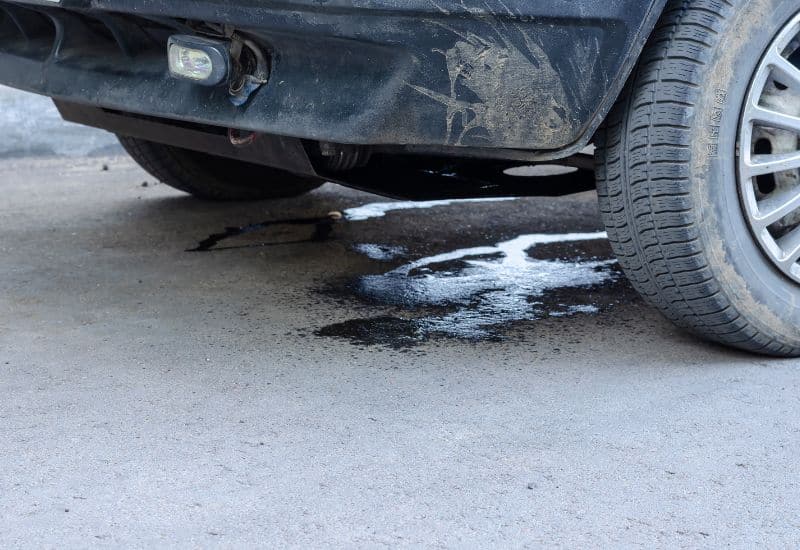
A coolant leak under the car is a telltale sign that the cooling system has failed and the engine is about to overheat. The more coolant you see pouring out, the more serious danger the engine block is in.
Things That Can Cause Your Engine to Overheat
Engine overheating can be caused by a major fault in the cooling system or a chain reaction of minor problems contributing to a scorching hot engine block.
If it’s the engine cooling system, a clog in the radiator, a bad water pump, contaminated coolant, the thermostat being stuck closed, or a major leak in a line can make it hard for the cooling system to draw heat out of the engine block efficiently.
It’s also possible for the serpentine belt to fail, which renders the water pump useless. Without it driving coolant through the system, the engine block continues to get hotter and hotter, even though the cooling system components themselves.
Overheating can also be caused by oil issues or problems with the engine’s ability to lubricate the pistons. A failed oil pump, bad seals, a blown head gasket, or degraded oil can all lead to massive friction problems in the relationship between the pistons and the cylinder walls. Compounding this is that hot oil starts to break down rapidly, making the heat caused by friction even worse!
8 Common Component Problems That Can Cause Your Car’s Engine to Overheat
There are a lot of different component failures that cause overheating. While a single one might be at fault, they often happen in tandem, or one problem, like contaminated coolant, causes other problems like a stuck-closed thermostat or a clog in the coolant lines. The following are some of the more common component failures that can lead to overheating and how to identify them.
1. A Bad Water Pump
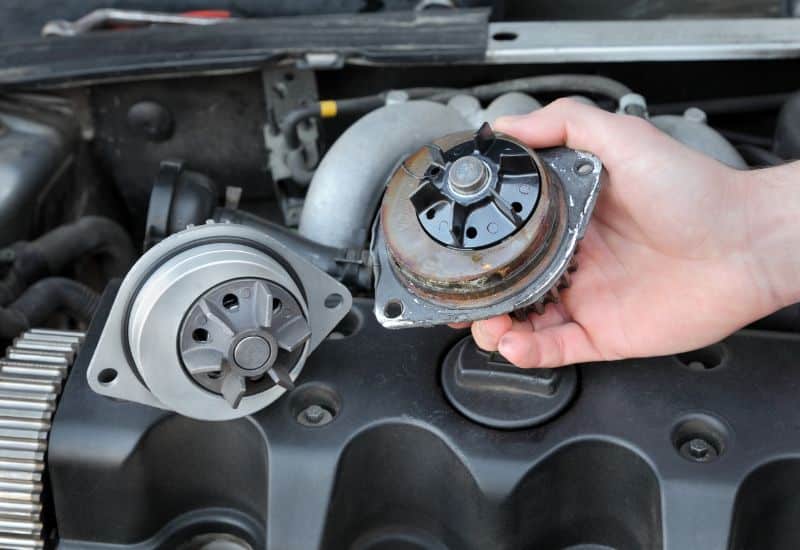
Your car’s water pump truly is the beating heart of the cooling system. When it fails, or it can’t get sufficient power from the serpentine belt, the lifeblood coolant fluid doesn’t circulate from the engine to the radiator as it should. This can lead to the engine running a little warmer than usual when you first start it up, and then it suddenly overheats as the engine can’t dissipate the heat energy.
Symptoms of a bad water pump often manifest as coolant leaks near the water pump, the engine running increasingly hot, and a high pitch whine. If the lines are still coolant, you might also notice steam coming out from the hood. If the water pump fails, the overheating effect will happen fast, even in very cold weather.
2. Low Coolant in the Radiator
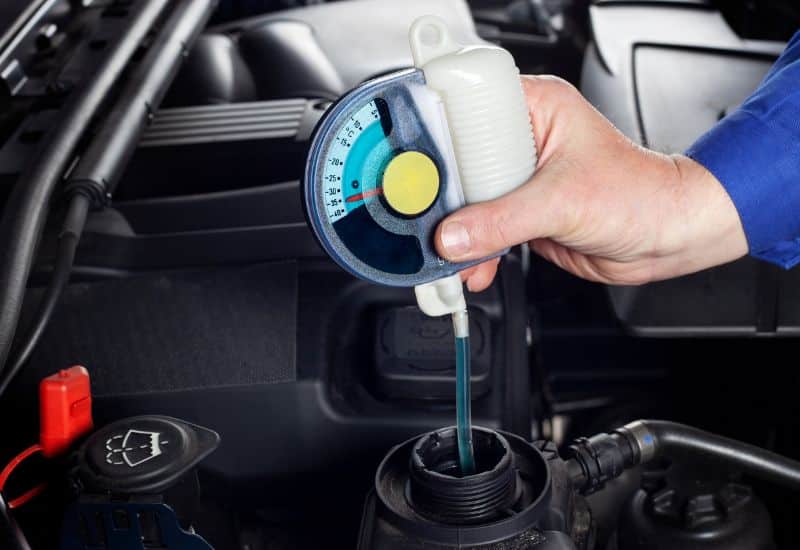
Even small coolant leaks can lead to low coolant levels in the radiator and the rest of the cooling system, leading to overheating. Low coolant hampers the radiator’s ability to dissipate the heat energy produced by the engine. If the engine coolant is too low, the system might not pressurize properly and won’t circulate coolant.
Symptoms of low coolant can be hard to spot when the engine is hot, as the line in the reservoir can look falsely high. You can only really trust that line when the engine is cool. However, a car’s cooling system is engineered to be sealed. So, if your coolant is low, you likely have a leak in a hose or a hole in your radiator, which will show up as leaking antifreeze inside the engine bay or under the car. It’s usually easier to spot these leaks when the engine is running and the system is pressurized.
3. A Bad Radiator or Clogged Coolant Lines
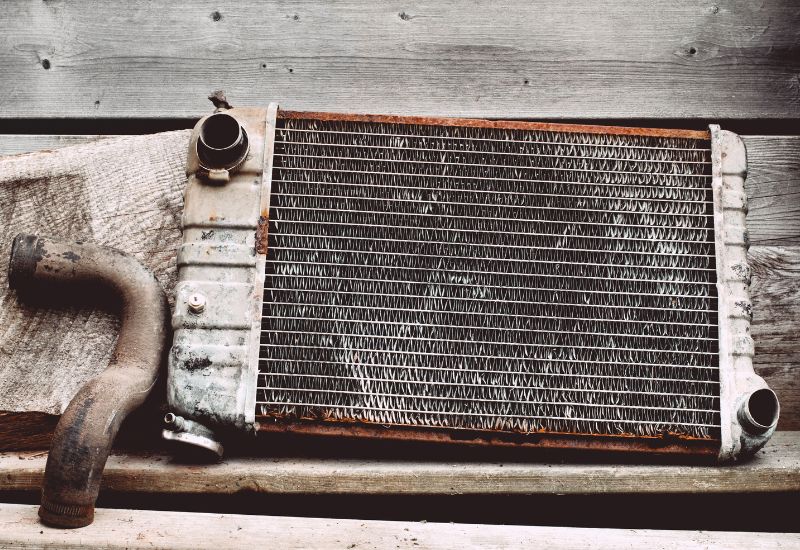
A bad radiator with clogged material in the cooling fins or rust from the inside of the radiator clogging the coolant lines is also a common cause of overheating in older cars. This is even more likely to occur in rural areas where you have to drive on dusty gravel roads. The dust and other debris from the tires get kicked up into the radiator, where it crusts into the cooling fins.
At the same time, rust, partial clogs, particulate debris, and running hot can also degrade the engine coolant. This compounds the overheating effect on the engine over time.
If you see a lot of dust and debris caked on the radiator or you have debris in the grill, it blocks the airflow the radiator needs to dissipate heat. This usually causes the engine to run hotter and hotter slowly. Then it reaches a point where the temperature gauge on the dash starts to run away.
4. Bad Coolant
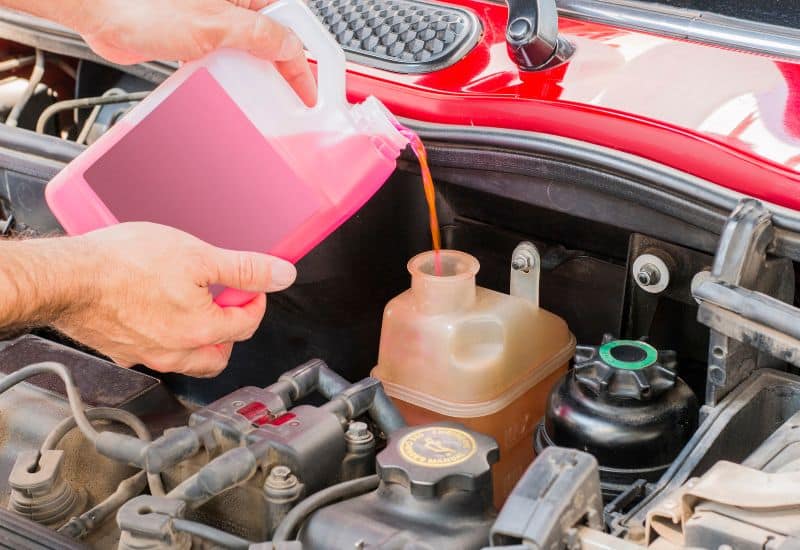
Old coolant, degraded coolant, contaminated coolant with rust and particle debris, or using the wrong coolant can also cause overheating problems. Not to mention potentially damaging or clogging the core of the radiator.
Any time you have to add coolant or bring your car to a mechanic for a radiator flush and fill, ensure that the right kind of coolant is being put into the system.
Another way coolant can be contaminated is if a recent overheating problem causes a failure in the head gasket. This can allow oil to enter the coolant system, affecting its performance. This could also cause coolant to get into the oil, increasing friction in the cylinders, further adding to the engine’s heat.
Bad engine coolant looks like sludge in the reservoir and often causes the engine to run increasingly hot. Eventually, the inability to draw heat out of the engine block leads to the engine overheating. The contaminates in the coolant can also start to accumulate in the system, causing the thermostat to get stuck open or closed. If it gets stuck closed, you’ll notice it immediately as the temperature needle on the dash will quickly spike.
5. A Stuck Closed Thermostat
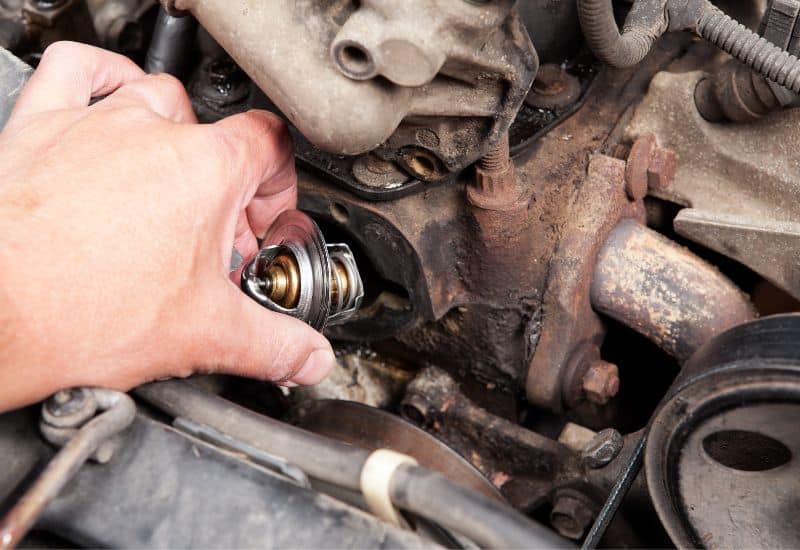
Your engine’s thermostat opens and closes based on the engine temperature to help the radiator dissipate heat at the right time. Time, rust in the coolant lines, rust in the radiator, and degraded coolant can cause the thermostat to be stuck closed.
This prevents coolant from flowing through the system, and the heat in the engine rapidly overheats shortly after it warms up. If it’s winter time, you’ll likely also notice the heat coming out of your vents will be pathetically weak, as there won’t be any hot fluid circulating through the heater core.
If your thermostat is stuck closed, the engine will usually overheat within 10 to 15 minutes after warming up. You’ll also notice the hot air blowing out of your dash vents is very weak.
Eventually, the heat concentrated at the stuck-closed thermostat will melt the gasket that marries it to the radiator. This will cause strange leaks at the radiator’s top that leave behind white streaks on the thermostat housing after the leaked coolant evaporates.
6. Low or Degraded Engine Oil
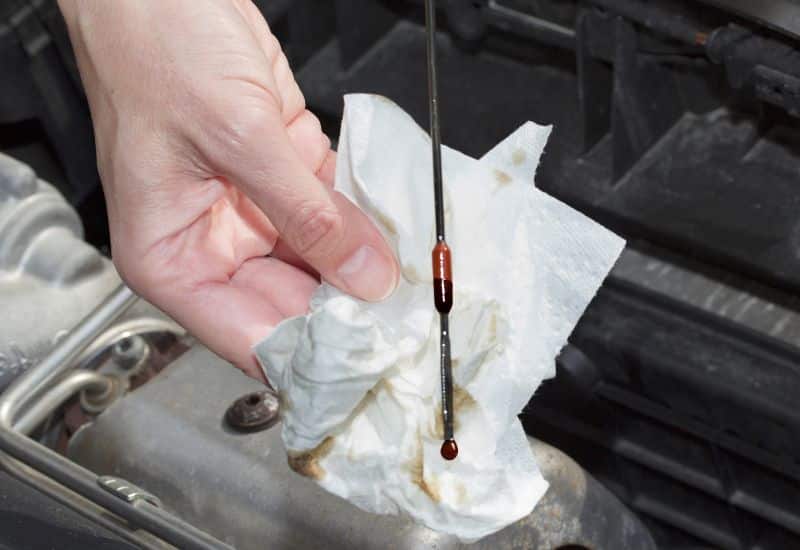
Engine oil that’s broken down due to past overheating problems and low oil caused by an oil leak increases friction in the relationship between the pistons and the cylinder walls. With every relentless piston stroke of the engine, the heat in the block gradually goes up. Eventually, it reaches a point where the engine’s cooling system can’t dissipate enough of the heat energy, and the engine overheats.
Low engine oil is easy to spot on the dipstick, but mildly degraded engine oil isn’t quite as obvious. You might notice that the engine runs a little hotter than usual or that the exhaust smells a bit like burning oil. As the oil continues to degrade, it will start looking darker and dirtier, and the oil odors will start getting worse coming out of the tailpipe as well as in the cab of the car.
7. A Burned-Out Radiator Fan
If the radiator fan doesn’t turn on when the engine reaches a certain point, the temperature of the coolant in the radiator can rise, causing the engine to overheat slowly. An independent fan belt no longer drives modern-day radiator fans. Instead, electric motors come on when the engine coolant temperature sensor (ECTS) tells the ECU the coolant is getting hot.
If the ECTS is bad or the electric motor in the radiator fan is burned out, it won’t come on when it’s supposed to. You might not notice this when you’re driving down the highway, as the wind blowing through the front grill is helping to cool the radiator and the engine block. Then when you have to slow down, the heat-inducing stop-and-go traffic pushes the temperature of the coolant up. Yet there’s no fan or wind to help release the heat.
The symptoms of a dying or dead radiator fan are most noticeable when you’re idling. No air is rushing over the radiator, and it depends on the fan to help cool it. After a few minutes, you might see the temperature gauge on the dash rising slowly. If you step outside and stand near the grill, you’ll also notice that the fan is silent when it should be coming on every few minutes.
8. A Bad Serpentine Belt
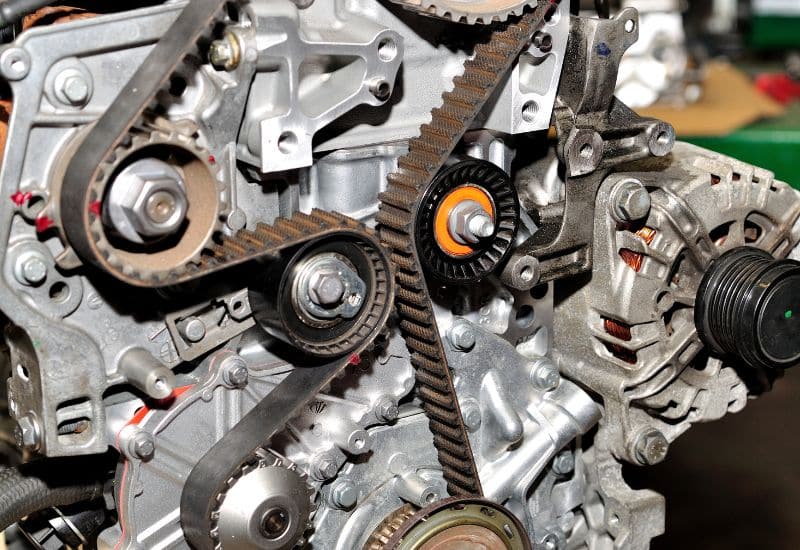
The serpentine belt drives the water pump, which circulates the coolant through the engine and radiator. If the serpentine belt is frayed, damaged, or breaks, the water pump won’t function properly, and the car will overheat rapidly.
If your car has a neoprene rubber or reinforced rubber serpentine belt, you’ll notice cracking and fraying on the belt. However, newer EPDM serpentine belts disguise their flaws until they suddenly turn ugly and fail.
Mechanical signs of a bad serpentine belt often show up as a loud whining sound when you start the engine or when you step on the gas pedal hard. You might also notice a weak battery, as the serpentine belt will cause the alternator to struggle to charge the battery. It will also under-power the air conditioning compressor, causing weak AC no matter what you set it to.
Frequently Asked Questions
What To Do If Your Car Starts Overheating
If you notice signs of overheating, such as the dash temperature gauge nearing the red line, pinging noises from the engine, odd “Hot” smells, or steam under the hood, you must pull over as soon as possible. Ideally, you want to park the car with a headwind blowing air at the grill.
Popping the hood will also help air get to the engine to cool it down. It’s also a well-recognized sign of distress for a trooper or a tow truck trying to help you.
You shouldn’t attempt to touch the engine or open the radiator cap while the engine is hot. You risk burning yourself and making a mess. The wisest move here is to wait 30 to 60 minutes or more for the engine to cool down fully. Then you can start assessing what’s caused the problem or have it towed to a nearby mechanic.
Can Overheating Cause an Engine To Seize
Pistons seizing in the cylinder is arguably the most serious form of engine damage caused by overheating. This is a severe situation where you are forced to drive for an extended period with an overheated engine. The oil degrades, and extreme friction between the pistons and the cylinder walls causes one or more pistons to fuse in place.
In a scenario like this, the engine is likely a total write-off and will have experienced other damage. You’ll have to weigh the cost of a replacement or major rebuild versus selling the rest of the car for parts.
Stay Ahead of Engine Overheating Damage
Symptoms of engine damage from overheating usually manifest in engine performance, and the engine is more likely to overheat again. This could be due to damage in the engine cooling system, a blown head gasket, a cracked head, and even degraded engine oil that increases friction.
If you’re lucky, the overheating incident affected the coolant and the engine oil and perhaps fouled the spark plugs. A coolant flush, refill, oil change, and spark plug replacement might be all you need to restore normal engine performance after overheating.
If the engine continues to run hot or shows other signs of overheating, you’re probably looking at serious damage to the engine. This could be a blown head gasket, cracked block, or cracked cylinder head caused by an overheating incident are serious repairs with much higher repair bills.

Written By
Jason Farrell
Jason Farrell is a certified master technician, the editor of Mechanic’s Diary in Pittsburgh, Pennsylvania. He is ASE (Automotive Service Excellence) certified and earned a Bachelor’s Degree in Automotive Technology from Pittsburg State University. With nearly 18 prior years of experience in the automotive field, he has extensive knowledge about Domestic, European, and other foreign makes and models of cars and light trucks. Jason’s experience working as a technician and service manager at dealerships, gave him the experience and know-how of most aspects of inspection, diagnosis, and repair from engine and drivability to electrical, HVAC, brakes, steering and suspension and everything in between.

